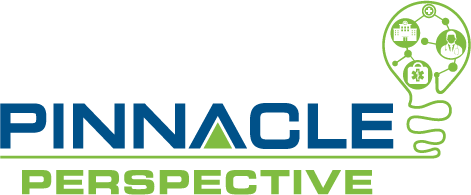
In the introduction, we discussed the three (3) edit types that make up the National Correct Coding Initiative (“NCCI”). Probably the most familiar of those edits are the procedure to procedure (“PTP”) edits, which bundle two codes together.
Don’t be tempted to underestimate this edit type. A common misconception is if two codes are bundled, you can just add a modifier 59.
First, there are quite a few “unbundling” modifiers. Modifier 59 should be the modifier of last resort.
Other NCCI unbundling modifiers are the anatomical modifiers (E1-E4, FA, F1-F9, TA, T1-T9, LT, RT, LC, LD, RC, LM, RI), the global surgery modifiers (24, 25, 57, 58, 78, 79), and the “other” modifiers (27, 59, 91, XE, XS, XP, XU). The NCCI manual explains it is important to select the most appropriate modifier for the job.
A great example of this is using the LT and RT modifiers, instead of 59, when the codes are on contralateral sides of the body.
Another great example is when LC, LD, RC, LM and RI are used to indicate separate vessels for Cardiology procedures.
PTP edits define when two codes (code pair) should not be billed together, except under certain circumstances. A good example to illustrate this is not billing for insertion of venous access (to administer drugs) for a surgical procedure because this would fall under “standard of care.”
Each code pair has a correct coding modifier indicator (“CCMI”) assigned to it. To determine what CCMI is associated with a code pair, review the NCCI edit for that code pair. The “official” way to do this is to download the NCCI Provider PTP edits. They are updated quarterly, so you will need to review the edits which correspond to the specific date of service. We have posted the link where you can find these edits below. However, there are other ways to review PTP edits which may be easier to navigate:
- Some of the Medicare Administrative Contractors (“MACs”) have NCCI tools on their websites. We have provided several below for you.
- Another option is to purchase coding software that includes an NCCI bundling tool.
- Once you determine the CCMI for your code pair is, you need to understand what that modifier indicator means. A modifier indicator 0 means NCCI PTP modifiers cannot be used to unbundle the edit pair. We will discuss a caveat to this later.
- Modifier indicator 1 means if the circumstances support it, a NCCI PTP modifier can be used to unbundle the edit pair.
- Modifier indicator 9 means the use of a NCCI PTP modifier is not specified. This should be when codes have been deleted from the NCCI edits. It is basically a place holder.
The main two indicators to be concerned with are 0 and 1.
Let’s look at some bundling edits that exist for code 20610 (Arthrocentesis, aspiration and/or injection, major joint or bursa (e.g., shoulder, hip, knee, subacromial bursa); without ultrasound guidance).
If you look at the edits for code 20610 you will see it is bundled with code 99156 (Moderate sedation services provided by a physician or other qualified health care professional other than the physician or other qualified health care professional performing the diagnostic or therapeutic service that the sedation supports; initial 15 minutes of intraservice time, patient age 5 years or older), but the modifier indicator is 0. This means you should not unbundle the code pair.
However, code 20610 is also bundled with code 96372 (Therapeutic, prophylactic, or diagnostic injection; subcutaneous or intramuscular), but for this pair the modifier indicator is 1. This indicates if the clinical circumstances and documentation were to support it, you could append an NCCI modifier to unbundle the code pair.
Now for the caveat we teased above. Even if a code pair has a modifier indicator of 0, did you know that you still have recourse to get the pair paid if the clinical circumstances are unusual? Yes, you read that correctly. Even though you cannot append an NCCI unbundling modifier, you can append modifier 22. Then your Medicare Administrative Contractor (“MAC”) will evaluate your unusual service to see if it supports additional payment.
This is a little-known loophole found on page 15, Chapter 1 of the 2024 NCCI manual. Remember, this is only to be used if the circumstances are highly unusual and is supported by your documentation. The manual gives a great surgical example involving code 69990 (Microsurgical techniques, requiring use of operating microscope).
Make sure to watch for our next article where we will discuss some of the finer points of medically unlikely edits (“MUE”).
Keeping up with the nuances of NCCI edits can be exhausting. PERCS is here to help you navigate guidelines to remain compliant. If you have any questions or need assistance, please contact Angie Wood, CPC, Sr. Physician Auditor and Educator at AWood@AskPHC.com or Lori Carlin, CPC, COC, CPCO, CCS, CRC, Principal, at LCarlin@AskPHC.com. They will be readily available to answer your questions and provide expert advice so you are well equipped to move forward!
References:
https://www.palmettogba.com/palmetto/jjb.nsf/DID/ES9QVHBJMD
https://www.cgsmedicare.com/medicare_dynamic/j15/ptpb/ptp/ptp.aspx

